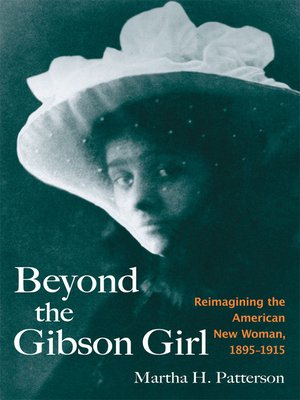
Sign up to save your library
With an OverDrive account, you can save your favorite libraries for at-a-glance information about availability. Find out more about OverDrive accounts.
Find this title in Libby, the library reading app by OverDrive.



Search for a digital library with this title
Title found at these libraries:
| Library Name | Distance |
|---|---|
| Loading... |
Challenging monolithic images of the New Woman as white, well-educated, and politically progressive, this study focuses on important regional, ethnic, and sociopolitical differences in the use of the New Woman trope at the turn of the twentieth century. Using Charles Dana Gibson's "Gibson Girls" as a point of departure, Martha H. Patterson explores how writers such as Pauline Hopkins, Margaret Murray Washington, Sui Sin Far, Mary Johnston, Edith Wharton, Ellen Glasgow, and Willa Cather challenged and redeployed the New Woman image in light of other "new" conceptions: the "New Negro Woman," the "New Ethics," the "New South," and the "New China."
As she appears in these writers' works, the New Woman both promises and threatens to effect sociopolitical change as a consumer, an instigator of evolutionary and economic development, and (for writers of color) an icon of successful assimilation into dominant Anglo-American culture. Examining a diverse array of cultural products, Patterson shows how the seemingly celebratory term of the New Woman becomes a trope not only of progressive reform, consumer power, transgressive femininity, modern energy, and modern cure, but also of racial and ethnic taxonomies, social Darwinist struggle, imperialist ambition, assimilationist pressures, and modern decay.
| Contents List of Illustrations Acknowledgments Introduction 1. Selling the American New Woman as Gibson Girl 2. Margaret Murray Washington, Pauline Hopkins, and the New Negro Woman 3. Incorporating the New Woman in Edith Wharton's The Custom of the Country 4. Sui Sin Far and the Wisdom of the New 5. Mary Johnston, Ellen Glasgow, and the Evolutionary Logic of Progressive Reform 6. Willa Cather and the Fluid Mechanics of the New Woman Conclusion Notes Bibliography Index | "Beyond the Gibson Girl is an interesting, important, and highly readable study defining the New Woman, a figure of enduring importance to both cultural and literary history. Martha Patterson looks wisely beyond any fixed perspective to show how differently this figure is conceived depending on the perspectives from which she is viewed, and the effects on this image of issues of region, race, ethnicity, and social class."—Elsa Nettels, professor of English, emeritus, College of William and Mary"Patterson's work is insightful, penetrating, and highly readable. . . . Highly recommended."—Choice
"Patterson is to be lauded for problematizing the figure of the New Woman in literature and popular culture beyond what has been done in any previous studies, especially in the way she examines the competing and conflicting claims, constraints, and possibilities for women."—Journal of American History
|
Martha H. Patterson is an associate professor of English at McKendree University, Lebanon, Illinois.







